Vision for Religious Education at Our Lady of Dolours
Religious Education consists of two distinct but complementary dimensions, namely an educational dimension and a faith formation dimension.
Since 2008, the distinct and complementary nature of both dimension of religious education has been conceptualised in the following Model for Religious Education:
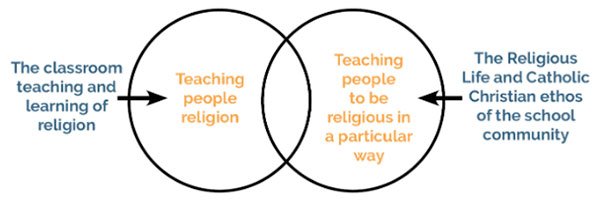
Religious EducationThe first dimension, most commonly referred to as the classroom teaching and learning of religion, is focused on Religious Education as an educational activity. It utilises a range of teaching and learning processes and resources. The second dimension, faith formation, is reflected in the religious life of the school, family and parish. The Guidelines acknowledge that the educational dimension and the faith formation dimension are inextricably linked. The classroom teaching of religion is one element in a complex web of experiences that have the potential to nurture the faith life of young people.
Religious Education aims to ‘develop students’ religious literacy in the light of the Catholic tradition, so that they may participate critically and effectively in the life of their faith communities and wider society.” (A Syllabus for Religious Education for Catholic Schools, p 18) This aim promotes the development of knowledge, skills and values which students need to participate as active lifelong learners within church and community contexts. Students are actively involved in constructing understandings of the Catholic tradition as well as acknowledging other religious traditions, the nature of religion and its place in life and Australian society. This key learning area has been organised into four strands: Scripture; Beliefs; Celebration and Prayer; Morality. Through these strands students engage with outcomes that describe understandings of the knowledge, skills, technologies and processes specific to Religious Education.
Religious Life of the School
The Religious Life of the School focuses on the dimension of Religious Education, commonly referred to as 'teaching people to be religious in a particular way' (Moran, 1991) and is comprised of four interrelated components:
Prayer and Worship
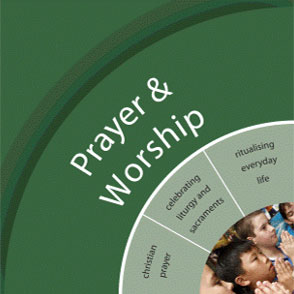 Prayer is the raising of one's mind and heart to God or a request for good things from Him. Worship is described as the adoration of God that may be expressed through praise, self-offering, sorrow or petition. Prayer is the raising of one's mind and heart to God or a request for good things from Him. Worship is described as the adoration of God that may be expressed through praise, self-offering, sorrow or petition.
- Teachers use the Religious Education Curriculum to plan, teach and pray traditional prayers, devotions and meditation practices relevant for the year level.
- Daily prayer opportunities at morning assembly, whole school gatherings and meetings.
- A Religion roster is distributed each term, reflecting the celebrations of liturgical seasons, feasts and significant days.
- Sacramental information is distributed to the school community and support is provided to families engaged in sacramental programs.
Prayer and worship in the classroom
- Each class is provided a prayer box which contains the necessary requirements for classroom prayer.
- The prayer boxes are returned to the APRE at the end of the year for replenishment etc.
- Each classroom has a prayer table that is used to reflect the liturgical seasons.
- It is an expectation that prayer is a part of the daily program in each classroom – preferably in the morning.
- In daily prayers students should be exposed to a wide variety of prayers (see resource in prayer box).
- Students are actively engaged in prayer experiences with students leading prayer where appropriate.
- School celebrations will include songs, readings and prayers and teachers are expected to practice these with their students to prepare them for the celebration.
- School assemblies are a celebration of the RLOS and students should be guided to value these prayer experiences.
Religious Identity and Culture
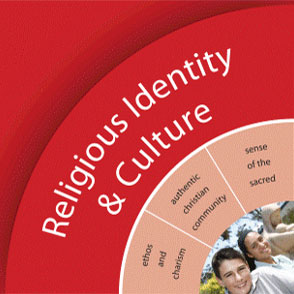 Our Lady of Dolours derives its identity and culture from its Catholic Christian character. The school is called to be a real and living expression of the Church's pastoral mission in the world. Our Lady of Dolours derives its identity and culture from its Catholic Christian character. The school is called to be a real and living expression of the Church's pastoral mission in the world.
- We promote elements associated with each our patron saints; Our Lady of Dolours, St Mary of the Cross MacKillop and St Benedict. We embrace the charism of The Good Samaritan Sisters who founded the school in 1951.
- We incorporate prayers and songs associated with our founders into the regular rituals at school.
- We celebrate our Patron, Our Lady of Dolours in a whole school community celebration. In this devotional practice, emphasis is placed on the Indigenous land on which we gather and the use of traditional and contemporary prayer styles.
- Our sporting houses are named after our patrons and students are taught the charism and prayers of each patron throughout the year.
- Policies, structures and practices provide equity for all students.
- We acknowledge connections with the wider church community.
Evangelism and Faith Formation
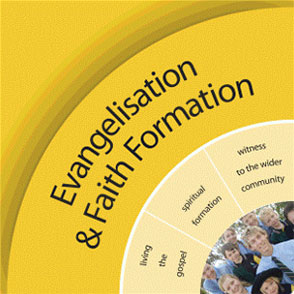 Evangelisation and faith formation are focused in an explicit way on the call to hear the Gospel of Jesus Christ, to respond to it in daily life and to deepen personal understanding and faith. Evangelisation and faith formation are focused in an explicit way on the call to hear the Gospel of Jesus Christ, to respond to it in daily life and to deepen personal understanding and faith.
- Community professional development and initiatives connect the gospel of Jesus Christ and promote Christian ministry on vocation.
- Enrolment policies and structures promote inclusion in a sense of community.
- Practices promote a culture of hope, optimism, joy and inclusion that reflects a life of Jesus Christ.
- Student leaders are provided with faith-formation experiences.
- Data forms the basis for planning spiritual formation experiences.
- We celebrate religious unity and diversity, including the ancient tradition of our First Nations people.
- We teach students how to witness the values of Catholic schooling at external events and activities such as the ANZAC Day march, excursions and interschool sport.
Social Justice and Action
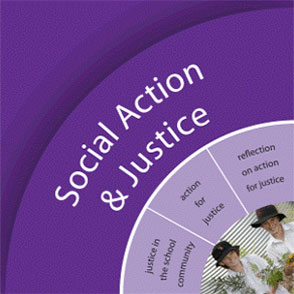 At Our Lady of Dolours we believe each person is made in the image and likeness of God and has absolute dignity and worth. We work to build the dispositions of empathy and solidarity in our students through programs for service-learning, social justice programs and outreach experiences. At Our Lady of Dolours we believe each person is made in the image and likeness of God and has absolute dignity and worth. We work to build the dispositions of empathy and solidarity in our students through programs for service-learning, social justice programs and outreach experiences.
Communication and interaction between members of the school community respects the rights and dignity of all. Social Justice is integrated throughout the school through classroom prayers, assemblies and support of organisations such as Caritas, Catholic Missions and St Vincent de Paul. Tools such as displays, calendars, assemblies and newsletters are used to encourage prayerful responses to social justice concerns. Marginalised groups are welcomed and supported. The school Vision and Mission Statements challenge the community to espouse Catholic social teaching and scripture. Inclusive participation is encouraged at events such as excursions, fundraisers and immersions. Restorative practices are engaged to promote peaceful relationships within and beyond the school community. School programs and practices promote reconciliation, meditation and the use of story to assist reflection on social justice issues and themes.
© Brisbane Catholic Education, (2023)
|